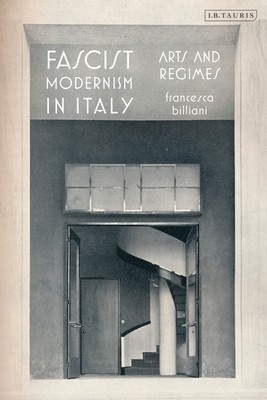
- We will send in 10–14 business days.
- Author: Francesca Billiani
- Publisher: Bloomsbury Academic
- ISBN-10: 0755642074
- ISBN-13: 9780755642076
- Format: 15.6 x 23.4 x 1.4 cm, softcover
- Language: English
- SAVE -10% with code: EXTRA
Reviews
Description
Between 1917 to 1975 Germany, Italy, Portugal, the Soviet Union, and Spain shifted from liberal parliamentary democracies to authoritarian and totalitarian dictatorships, seeking total control, mass consensus, and the constitution of a 'new man/woman' as the foundation of a modern collective social identity. As they did so these regimes uniformly adopted what we would call a modernist aesthetic - huge-scale experiments in modernism were funded and supported by fascist and totalitarian dictators. Famous examples include Mussolini's New Rome at EUR, or the Stalinist apartment blocks built in urban Russia.
Focusing largely on Mussolini's Italy, Francesca Billiani argues that modernity was intertwined irrecoverably with fascism - that too often modernist buildings, art and writings are seen as a purely cultural output, when in fact the principles of modernist aesthetics constitute and are constituted by the principles of fascism. The obsession with the creation of the 'new man' in art and in reality shows this synergy at work. This book is a key contribution to the field of twentieth century history - particularly in the study of fascism, while also appealing to students of art history and philosophy.EXTRA 10 % discount with code: EXTRA
The promotion ends in 19d.23:03:52
The discount code is valid when purchasing from 10 €. Discounts do not stack.
- Author: Francesca Billiani
- Publisher: Bloomsbury Academic
- ISBN-10: 0755642074
- ISBN-13: 9780755642076
- Format: 15.6 x 23.4 x 1.4 cm, softcover
- Language: English English
Between 1917 to 1975 Germany, Italy, Portugal, the Soviet Union, and Spain shifted from liberal parliamentary democracies to authoritarian and totalitarian dictatorships, seeking total control, mass consensus, and the constitution of a 'new man/woman' as the foundation of a modern collective social identity. As they did so these regimes uniformly adopted what we would call a modernist aesthetic - huge-scale experiments in modernism were funded and supported by fascist and totalitarian dictators. Famous examples include Mussolini's New Rome at EUR, or the Stalinist apartment blocks built in urban Russia.
Focusing largely on Mussolini's Italy, Francesca Billiani argues that modernity was intertwined irrecoverably with fascism - that too often modernist buildings, art and writings are seen as a purely cultural output, when in fact the principles of modernist aesthetics constitute and are constituted by the principles of fascism. The obsession with the creation of the 'new man' in art and in reality shows this synergy at work. This book is a key contribution to the field of twentieth century history - particularly in the study of fascism, while also appealing to students of art history and philosophy.

Reviews